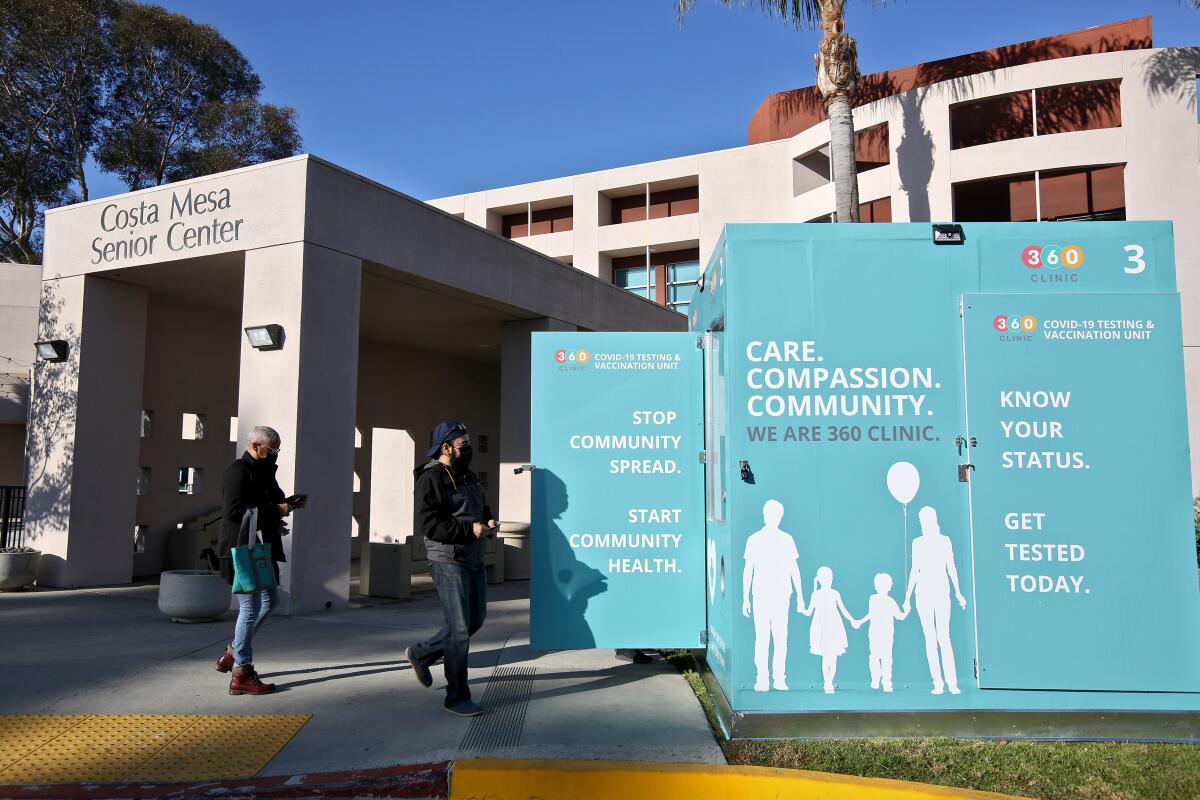Orange County’s COVID-19 transmission rate remains high as state mask mandate set to expire next week

Although California’s indoor mask mandate will soon expire for vaccinated people, Orange County public health officials recommend residents continue following safety precautions, citing high transmission rates that could continue ballooning with BA.2, a sublineage of Omicron.
“There’s still a potential for rates to either plateau or slightly rise for a period of time,” Dr. Regina Chinsio-Kwong, deputy county health officer, told reporters during a conference call Wednesday.
Chinsio-Kwong used Denmark as an example and noted how the country experienced a prolonged surge, likely because of BA.2. Although there is still not much known about this sublineage, scientists and health officials worldwide are concerned it could be more contagious.
The Golden State’s mandate will expire Feb. 16, meaning all counties without a local mask order, including Orange County, will allow vaccinated residents to go about life as normal at indoor public places. However, masks will still be required for unvaccinated residents indoors and for everyone in select settings such as hospitals, nursing homes and while on public transit.
Ultimately, Chinsio-Kwong said residents should assess their own risk and be mindful of others as life inches toward normalcy.
She said she hasn’t and doesn’t plan to step inside a gym yet because of the county’s high transmission rate, but empathizes with those who use exercise as a form of care for their physical and mental health.
When indoor dining “maybe spread yourself out,” she said. “The weather’s nice and warm. Eat outdoors if possible and if you have to be indoors, space yourself out. Consider wearing your mask when you’re really not eating or drinking.”
Now in the third year of the pandemic, the county logged 287 total deaths just last month and officials expect that number to be higher once the full data is collected. The majority of people who have died of COVID-19 are unvaccinated and older or were immunocompromised, according to Chinsio-Kwong.
Asked by a reporter how the county plans to reach those who’ve become numb to the routine safety precautions shared day in and day out, Chinsio-Kwong said she was open to hearing suggestions.
“It’s hard to change someone who has no knowledge of information,” she said. “No matter what I say, no matter what the hospitalists say … even though it’s a mild illness that you can still severely affect someone. It’s really hard to get that through to someone who …has been hearing all of this information day in and day out.”
On Wednesday afternoon, the Orange County Health Care Agency reported 1,414 new cases with 60 additional deaths, bringing the overall case count to 528,794 cases since the pandemic began.
Although the healthcare industry continues facing staffing shortages, Chinsio-Kwong said the county is beginning to see “a little bit of a light at the end of the tunnel.”
Hospitalizations are dipping, including those in intensive care unit and in pediatrics. Data shows 617 hospitalizations logged Wednesday, 229 fewer than the agency recorded on Feb. 1.
And although it varies at each hospital, Chinsio-Kwong said the average wait time to be seen has been less than 30 minutes.
The county tallied over 2 million residents, more than half the county’s population, as fully vaccinated.
To learn more about COVID-19 in O.C., visit: www.occovid19.ochealthinfo.com/coronavirus-in-oc.
All the latest on Orange County from Orange County.
Get our free TimesOC newsletter.
You may occasionally receive promotional content from the Daily Pilot.




